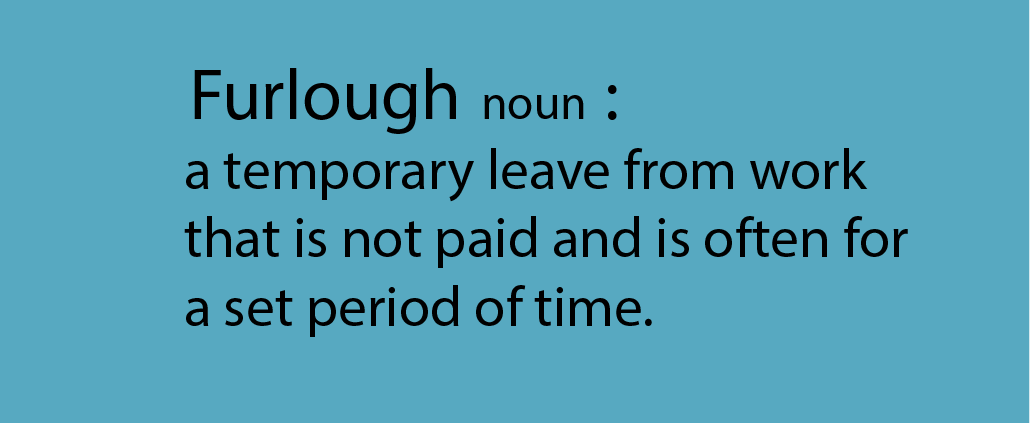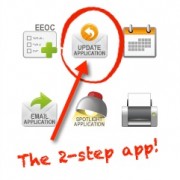Managing a Furlough
The term and practice of furloughing workers is often associated with industries such as automotive and construction, or, somewhat recently, the federal government–think “government shutdown.” However, in the past few weeks the COVID-19 pandemic has caused companies in other industries to begin the furlough of employees as well. So what is a furlough, and how is it different from a layoff?
Furlough Vs. Layoff
A furlough is a leave of absence without pay or reduction of hours that is usually brought about by an employer’s negative business conditions–current or forecasted. As such, the leave is often indefinite, with the employee either returning to full-time work when conditions improve, or being laid off when conditions have little hope of improvement. Furloughed employees can continue to receive benefits such as healthcare and insurance, but their ability to collect unemployment benefits is determined by individual state law.
A layoff is the termination of the employment relationship due to business conditions–usually negative, but not always. Whereas a furloughed employee can immediately resume employment with their employer once business conditions improve, an employee that is laid off must be rehired. Therefore, layoffs are usually made when it’s highly doubtful that business conditions will improve in the near future. The employer is willing to lose talent in order to save the costs associated with payroll and benefits.
COVID-19 Furloughs
Today, in the face of a pandemic, companies across all industries have or are considering the furlough of their employees. Indeed, with so much economic uncertainty, many companies see a furlough as the best option for proactively responding to the challenges that will come. However, it’s important to realize that while a furlough provides an employer with a degree of relief and control, it also transfers the burden to the employees. And that raises the question: how can HR professionals efficiently manage a furlough with empathy?
The easy answer is that a furlough, like a layoff, is simply a very difficult thing to manage, and you should try to do the best that you can. Some would advise that you “rip the bandaid off” and deliver the hard truth–not own the guilt, as it’s not your fault. This answer and advice can be helpful–for HR–but it’s of little help to the furloughed employee. And while I’m not suggesting that HR allow themselves to be paralyzed by “feelings,” I am saying that in order for a furlough to function in the way it’s intended, it must be managed in a way that ensures the furloughed employee wants to return to the employer when business conditions improve.
Five Considerations for Managing a Furlough
Here are five considerations for managing a furlough with empathy and maximizing the chances that your furloughed employees will return in better times.
Timing
The timing of a furlough is not always in the employer’s control–let alone in the control of HR. With the exception of seasonal businesses, the HR team may only have a few days notice that they will be managing a furlough. Still, with the time that you do have, consider what time would be best for communicating the news. You will want the employees to benefit from hearing:
- A scheduled time to receive the news, not off-hand or as part of another meeting
- The news from you (or CEO) first, not through the grapevine
- The news when necessary for the employees, not expedient for the employer
- The news as far in advance as possible, not at the last second
Tone
Communicating a furlough requires professionalism and empathy. This is a hard balance to strike, but it’s critical in order to ensure that employees are not needlessly insulted or resentful. In order to achieve this, make sure to consider the following:
- Your tone should be professional, regardless of your unique relationship with the employee.
- A professional tone does not require that you ignore the employee’s unique circumstances.
- Empathy can be expressed by acknowledging an employee’s circumstances, and then addressing how the furlough will impact them (include resources for additional help).
- Answer employee questions fully and directly–even if it means sharing hard truths.
Expectations
Managing a furlough relies heavily upon effective communication. The timing and tone of communicating a furlough can go a long way toward making the initial interaction positive. However, the explicit goal of a furlough is to protect the employee-employer relationship going forward, so that the employees want to work for the employer when conditions improve. This requires clear and transparent communication of why the furlough is taking place and what the employee should expect. Be sure to include answers to the following:
- Why is the employee being put on furlough? This should not be explained simply as a “cost-cutting” measure. It’s better to describe the prevailing negative business conditions that require a furlough.
- How long will the furlough last? Either provide a specific date, or a specific set of conditions, that will mark an end to the furlough. If giving the latter, offer a date for following up.
- How will the furlough affect employee pay and benefits? Provide the employee’s last pay date, along with the benefits that will remain or go away. Do not simply ask the employee to reference their benefit documentation or the employee handbook.
Resources
Just as you need to manage a furlough for the employer, the employee needs to manage the furlough for their household. Employees will have unique circumstances, as mentioned above. As you communicate news of the furlough to each employee, encourage questions and listen actively for how the employee will be uniquely impacted. Be prepared to offer resources that will help them navigate the challenges that a furlough brings, such as:
- Loss of benefits; outline which benefits will be lost or reduced, and then provide resources for how an employee can address them.
- Loss of income; provide links or attachments with official information from the employee’s state or the U.S. Department of Labor.
Follow Up
Regardless of whether a furlough is indefinite or for a fixed term, employers would do well to check in with employees on furlough. The follow up does not need to be lengthy. In fact, the primary benefit may be in the gesture of reaching out and demonstrating that you care. That being said, a follow up is most helpful when it reinforces or adjusts an employee’s expectations. Look to include the following in your follow communications with employees on furlough:
- Current business conditions; are there any positive or negative indicators?
- Furlough timeline update; do you need to adjust the restart date, or do the conditions allow you to confirm a restart date?
- Help resources; is there anything the employer can help with?
Furlough PR
Managing a furlough is not only about managing the employee-employer relationship, public perception of a furlough must be considered as well. Sites like Glassdoor and the over-sharing that takes place on social media will all carry the news of a furlough–and the employee sentiments that go along with it. This fact has a direct impact on an organization’s employer brand, which heavily influences future hiring. So make sure that the public can easily understand how you are managing the furlough by taking a few proactive steps, such as:
- Create a press release for media outlets
- Promote how you are helping employees via social media channels
- Encourage employees on furlough to bring concerns and frustration to the company
Unless a furlough is part of an organization’s business model, no one expects or wants to utilize one. For an employer, it means that business conditions are deteriorating and profits are at risk. For the employee facing a furlough, it means the loss of income, a period of uncertainty, and all the challenges that come with that. However, when managed well, both the employer and employee can benefit from a furlough that minimizes the effects of poor business conditions and ensures future employment when conditions improve.









